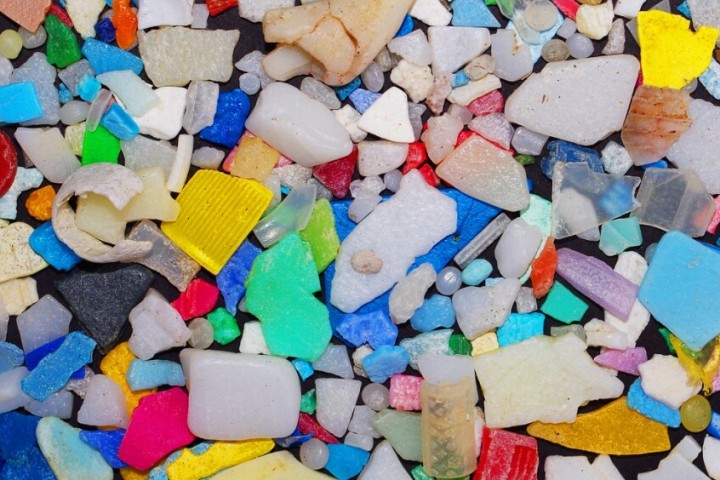Microplastics are not just everywhere in the environment, they're inside you, too.

Small plastic fragments, like these found on an Oregon beach, are an enormous environmental pollutant, but researchers are finding that microplastics are a major public health problem, too.
Anne McNeil is a researcher at the University of Michigan who spoke recently at the University of Akron where she received the American Chemical Society section award.
McNeil laid out in disturbing detail not just the threat microplastics pose to the environment and living ecosystems, but how they're finding their way inside our bodies.
Microplastics, according to McNeil, come in three types: deliberate microparticles, for example those found in facial scrubs; broken fragments from larger pieces; and plastic fibers.
They're more ubiquitous than you can imagine.
Studies have shown that significant amounts of nearly microscopic plastic, down to the size of pollen grains, are found everywhere from the wild lands of western national parks, to the pristine wastes of the high Arctic. The oceans are full of them, swirling in the great Pacific garbage patch, among other infamous gyres.
McNeil in her talk in Akron focused on land-based exposure to microplastics and two major sources for fibers and particles.
Doing laundry, she said, is a significant source of microplastic pollution in fresh water systems, and the washing of fleece materials in particular. Thankfully Congress in 2015 banned the sale of plastic microbeads in facial scrubs. But tiny plastic fibers from fleece jackets, blankets, and snuggly clothing produces a soup of microplastics with every load of laundry. Some of these particles find their way into our bodies through the water we drink and food like fish and shellfish that we eat.
Anne McNeil is a researcher at the University of Michigan who studies ways to remove microplastics from wastewater treatment plants.
McNeil also targeted cars as a major source of microplastics, in particular, wear from rubber tires. She says the world's combined 1.5 billion vehicles produce 4.0 million tons of synthetic fibers and rubber dust into the environment each year due to the abrasion of driving on roads.
"Washing your clothes and driving - the two worst things you can do in terms of releasing microplastics into the environment," she said.
But some of the most startling statistics come from the amount of microplastics we ingest.
“The average person is probably getting about five grams of plastic per week into their body from what you eat, what you drink, and what you breath," said McNeil.
To put this in perspective, "this is equivalent to eating a credit card every week," she said.
Even the act of breathing, especially indoors, can have consequences.
"In one study they estimated that you’re ingesting about 68,000 microplastics per year on average through breathing.”
McNeil says the health effects of microplastic ingestion and inhalation are not well understood, but preliminary studies have found that these tiny inert particles can lodge in organ systems, particularly the liver, kidney, and even the brain, where they defy degradation, causing chronic inflammation and other health issues.
Needless to say, we've created quite the mess with our love of cheap, convenient plastics.
But McNeil is hopeful we can begin turning the tide. She's studying ways to remove microplastics from municipal water treatment systems. Other broader solutions she says are up to policy makers, industry, and ultimately us.

